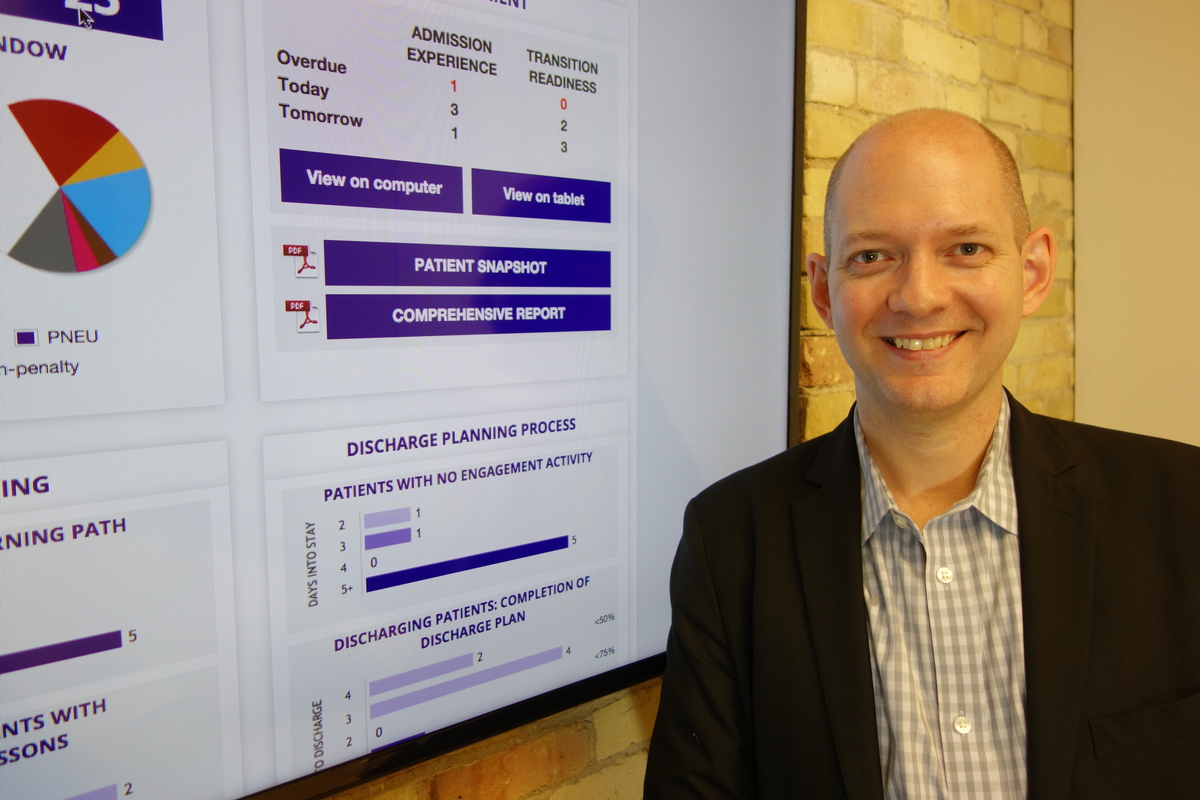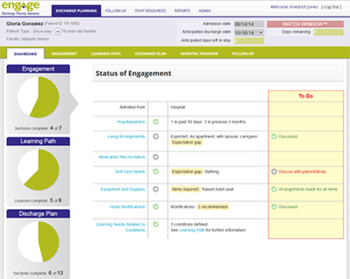Interactive website developer succeeds by excelling in information architecture

In Earthling Interactive, Adam Simcock has expanded a company that originally focused on soil and crop information systems to produce software for nursing homes and a wide range of other businesses.
Photo courtesy of Earthling Interactive
Earthling Interactive of Madison does produce websites, but calling the 16-year-old firm a “website developer” is like comparing a Boeing 777 pilot to a kid who hurls paper airplanes. Sure, they both achieve flight, but that’s the end of the similarities.
“Although we do create websites and e-commerce solutions for people, we mainly develop Web applications,” says company President Adam Simcock. “We create full business-oriented Web products, supported by a lot of business logic.”
In fact, for most of its projects, the website is only the last step in a long process of analyzing a problem, identifying the necessary data, devising the database and information architecture, creating the website and testing the whole thing.
That process is evident in a Web-based discharge planning system created for Align Health in Wausau, Wisconsin, which is marketing the system to nursing home chains. The goal, says Simcock, “was to make sure that from the day a short-term resident enters the home — usually after major surgery — the staff is engaging them, making sure they are prepared to go home safely, and not go back to the hospital.” One motivation is to avoid Medicare’s new charges for hospital readmissions.

Align and Earthling Interactive worked closely to develop Engage, a Web-based product that is changing how providers manage each patient’s transition and discharge process.
The software asks where patients will live and how they plan to care for themselves after release, and then identifies “expectation gaps,” Simcock says. “You don’t want someone sent home and find out they can’t get into the house because nobody made sure they had a walker.”
The answers will trigger online learning delivered on a tablet computer. Upon release, the patient takes a discharge plan home, with information about care, medications and medical appointments.
“The system was only recently released, but it’s already being used by about 100 nursing homes,” Simcock says. A previous Earthling software package, designed to measure patient, employee and family satisfaction for the same group in Wausau, reached half the nursing homes in the country before it was sold, Simcock says.
Earthling gained this ability to absorb, digest and release information when it began life as Earth Information Technologies. However, founder Dan Rooney, a UW–Madison remote-sensing Ph.D., had a very different focus: mapping soil quality for farmers.
In 2005, the “precision farming” system was sold to John Deere, which challenged the owners to broaden their focus, Simcock adds. “We had a team that had taken an idea and embodied it in software and hardware for mobile and the Web, gone from idea to market, and to acquisition by a big company.”
“UW was the reason I came here, and a company founded off UW was the reason I stayed. We would not be here at all if not for UW–Madison.”
Adam Simcock
In 2007, employees and one outside investor bought out part of the company, and in 2014 the outside investor brought in an investment group to buy out the remaining founder shares. The present ownership group includes some employees and the outside investors.
Operating what Simcock calls a “Web-mobile application company” requires a range of specialized skills. “We have experts in user experience and interface design, in information architecture and network security, as well as graphic designers and more traditional Web developers.”
Even as Earthling continues to support some of its first endeavors in soil and crop information, it also created a mobile falls-prevention app to pinpoint danger in older people’s homes. It custom-built an ordering website to automate purchases for Great Big Pictures, a Madison firm that prints large-scale graphics for retailers. It has built Web apps and e-commerce sites for a variety of firms, including a number of Madison startups.
Finally, Earthling is building the first product it will market itself: a database-analytical system to help nursing home proprietors anticipate the who, what and where of future demand for specialized services.
Although Earthling spun off from UW–Madison more than 15 years ago, the ties remain tight, says Simcock. He grew up in Ohio and came to Wisconsin to start a Ph.D. in geography in 2000, but was pulled away to work for the company before completing the degree. “UW was the reason I came here, and a company founded off UW was the reason I stayed,” he says.
Indeed, more than half of Earthling’s employees attended UW–Madison. “We would not be here at all if not for UW–Madison,” Simcock says. He adds that Earthling now has 30 employees at its offices near Madison’s Capitol Square. Each year, it brings in several million dollars worth of business from outside the state.


